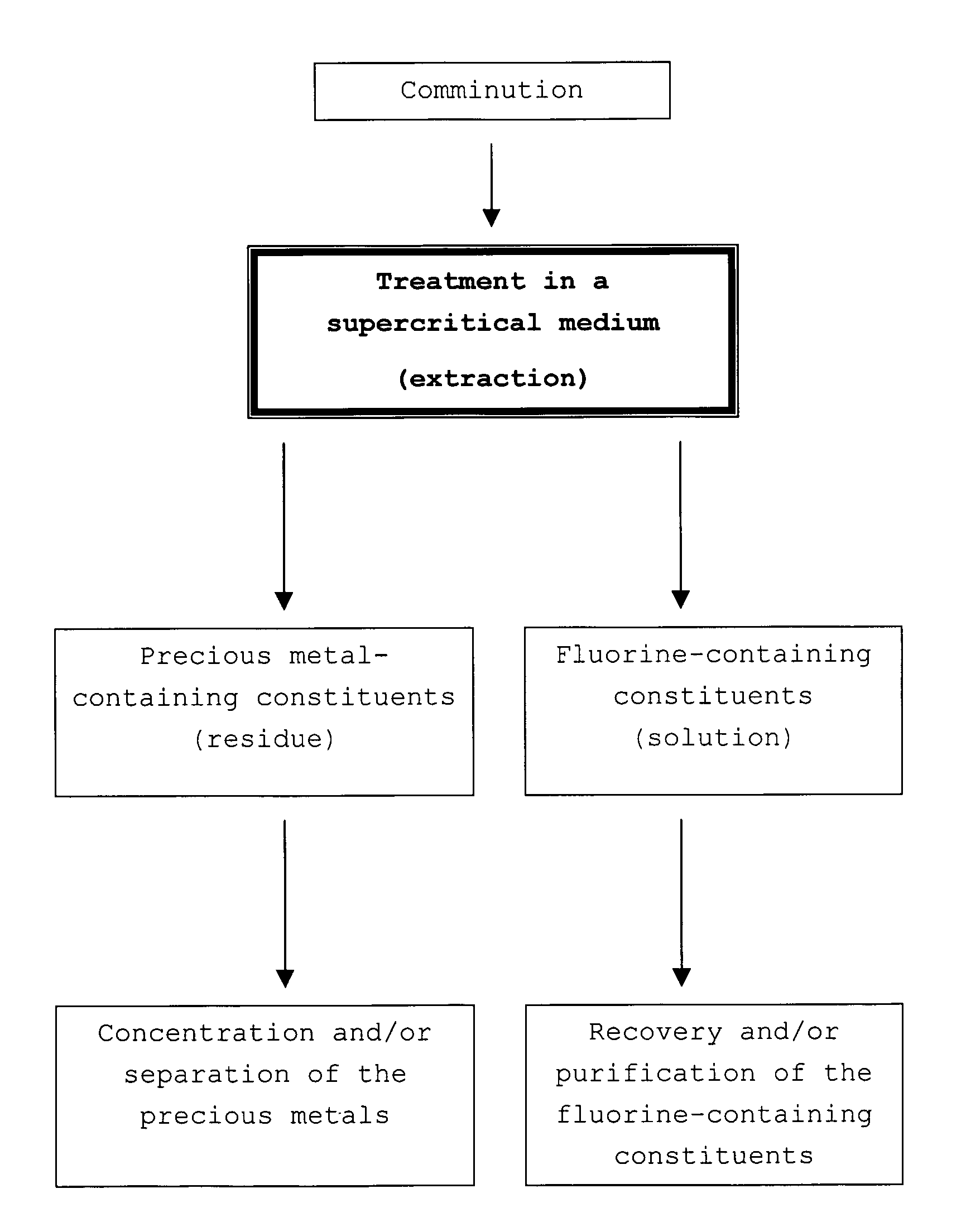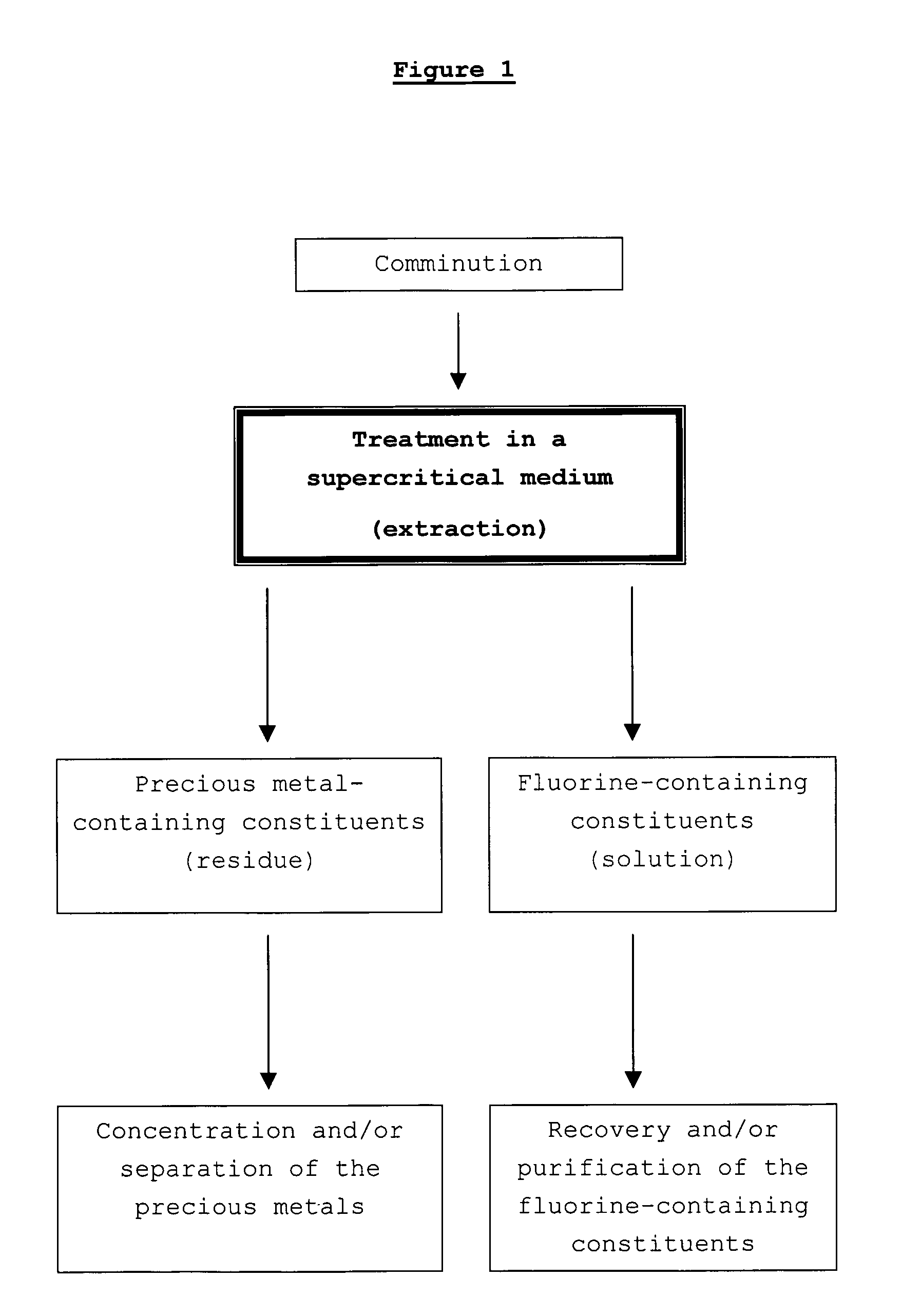Process for recycling fuel cell components containing precious metals
a fuel cell and precious metal technology, applied in the field of fuel cell components recycling, can solve the problems of flammability, safety, environmental pollution and toxic effects, and the disadvantage of using organic solvents
- Summary
- Abstract
- Description
- Claims
- Application Information
AI Technical Summary
Benefits of technology
Problems solved by technology
Method used
Image
Examples
example
[0050]A three-layer, catalyst-coated membrane (CCM, weight: about 10 g, containing about 1 g of catalyst coating) is comminuted mechanically into pieces having an edge length of 1-3 cm. Together with 1500 ml of deionized water, the material is then placed in a heatable stainless steel autoclave provided with a stirrer. The CCM contains a platinum catalyst supported on carbon black, perfluorinated ionomer (of Nafion®—solution DE-1020, from DuPont, USA) and a 25 μm thick per-fluorinated ionomer membrane (Nafion® NR 112, from DuPont, USA).
[0051]The setpoint temperature of the autoclave is set to 374° C. During the duration of the experiment of about 7 hours, a temperature maximum of 382° C. and a pressure maximum of 240 bar are reached.
[0052]The transparent, greenish solution with a black sediment obtained from the experiment is filtered through a commercial laboratory filter. The filter cake obtained has a consistency similar to that of carbon black, and the filtrate is clear and has ...
PUM
| Property | Measurement | Unit |
|---|---|---|
| pressure | aaaaa | aaaaa |
| temperature | aaaaa | aaaaa |
| reaction time | aaaaa | aaaaa |
Abstract
Description
Claims
Application Information
 Login to View More
Login to View More - R&D
- Intellectual Property
- Life Sciences
- Materials
- Tech Scout
- Unparalleled Data Quality
- Higher Quality Content
- 60% Fewer Hallucinations
Browse by: Latest US Patents, China's latest patents, Technical Efficacy Thesaurus, Application Domain, Technology Topic, Popular Technical Reports.
© 2025 PatSnap. All rights reserved.Legal|Privacy policy|Modern Slavery Act Transparency Statement|Sitemap|About US| Contact US: help@patsnap.com


